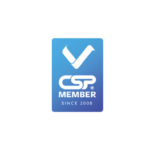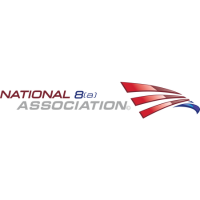
Unlock the Power of Accounts Receivable for Your Staffing Company
Accounts Receivables: What You Need to Know
Accounts receivable (A/R) isn’t just a financial term; it’s the lifeblood of your staffing company. A/R is the money your customers owe you for the services your employees have provided on credit. Let’s dive into A/R and break down its complexities into manageable, essential components.
Build a Solid Foundation
Managing your accounts receivable is like tending to the roots of a healthy financial tree. It ensures a steady cash flow and helps your business meet its financial commitments. At Encore Funding, we help our clients understand vital parts of their business through access to an experienced advisory team that 100% dedicated to their vision and growth.
Read on for the most essential aspects of accounts receivable that are helpful to know as a staffing entrepreneur.
Concentrations
Accounts receivable concentrations refers to the proportion of your outstanding invoices that are tied to a small number of customers. High concentrations of accounts receivable with a few clients can be risky. If one of these key customers encounters financial troubles or disputes, it can severely impact your cash flow. Diversify your customer base to safeguard your cash flow from potential disruptions.
Days Sales Outstanding (DSO)
Think of DSO as the heartbeat of your cash flow. The faster it beats, the healthier your finances. Monitor and manage DSO closely to identify and address any issues with collections. Efficient credit policies and streamlined invoicing processes can make your DSO dance to a more favorable rhythm.
Days Sales Outstanding (DSO) is a critical metric that measures the average number of days it takes for your staffing company to collect payment after making a sale. A high DSO indicates that your business is taking longer to receive payments, which can strain your cash flow; a low DSO implies that you’re A/R turnover is efficient.
To calculate DSO, divide the total average accounts receivable (avg A/R) by the total sales in the period and multiply the result by the number of days in the period you are analyzing (e.g., a month, a quarter, or a year).
DSO Calculation
DSO = (“avg A/R” / “Period Sales”) X “Days in Period”
Monitoring and managing your DSO is crucial to identify and address issues with collections. Efficient credit policies and streamlined invoicing processes can make your DSO lower and more favorable.
Credit Limits
Setting appropriate credit limits for your customers is a balancing act. While extending credit can attract more customers and drive sales, it also involves risk. Offering credit to customers with low creditworthiness can result in payment delays or defaults. To strike the right balance, you should establish clear credit policies and evaluate the creditworthiness of customers before extending credit.
Regularly review and adjust based on payment history, financial stability and market conditions to minimize the risk of bad debt.
Accounts Receivable Buckets
A/R buckets categorize outstanding invoices by the length of time they’ve been overdue. Typically, A/R buckets are divided into different aging categories, like 1-30 days, 31-60 days, 61-90 days and over 90 days. This type of grouping helps you identify trends in late payments and take appropriate actions to collect overdue amounts.
For example, if you notice a significant number of invoices in the 61-90 days bucket, it may be time to follow up with customers, send reminders or initiate collections processes. Effective A/R bucket management can help you reduce DSO and improve cash flow.
Trends
Trend analysis may sound daunting, but it’s easier than you may think. Tracking seasonal patterns, customer payment behavior, invoice and collection efficiency and the aging of receivables over time helps identify potential issues.
Key trends to monitor:
- Seasonal Patterns: Some businesses experience fluctuations in sales and collections throughout the year. Understanding these patterns can help you plan for lean periods and manage cash flow effectively.
- Customer Payment Behavior: Observe how your customers pay their invoices. Are there recurring issues with specific customers or industries? Identifying these patterns can help you address problems early.
- Invoice and Collection Efficiency: Track the time it takes to create and send invoices, as well as the time it takes to collect payments. Streamlining these processes can lead to quicker payments and improved cash flow.
- Credit Policies: Regularly review the effectiveness of your credit policies. Are they too lenient, resulting in a high number of overdue payments, or too strict, hindering sales? Adjust your policies to strike the right balance.
- Aging of Receivables: As mentioned earlier, closely monitor your A/R buckets to detect changes in aging patterns. This can help you intervene before overdue invoices become uncollectible.
Tracking these insights empowers you to make informed decisions for your staffing company’s financial health.
Short Payments
When customers pay less than agreed, it can be jarring to your finances. Short payments, or underpayments, can be unintentional and may stem from errors or disputes. They can also be intentional attempts to delay payment. To address short payments, it’s important to be proactive. Here are some ways to overcome short payments:
- Communicate: Reach out to the customer to discuss the discrepancy and seek clarification. It may be a simple error that can be quickly rectified.
- Resolve Disputes: If the short payment results from a dispute, work with the customer to resolve the issue, and come to a mutual agreement.
- Reduce Invoicing Accuracy: Review your invoicing processes to minimize errors that lead to short payments. Ensure that your invoices are clear and accurate.
- Stricter Collections: If short payments persist, consider implementing more rigorous collections procedures to recover the outstanding amounts.
Types of A/R Aging Reports
Understand the difference between the two main types of A/R aging reports – summary and detailed aging reports – and whether they’re based on due dates or creation dates. This knowledge is your compass for steering clear of financial pitfalls.
Summary aging report
- Listed by customer only
- Allows you to see how quickly customers pay and whether there are any payment trends
Detailed aging report
- Listed by individual invoice
- Allows you to determine if invoices are being short paid or if invoices have been skipped when payments are made
These facts can be important in determining if invoices have been received by your customers’ accounts payable departments or if there are possible disputes involving certain invoices to let collections people get a jump on communicating with customers’ accounts payable employees.
Accounts Receivable: More Than Just Numbers
Understanding your staffing agency’s accounts receivable isn’t just about numbers, it’s about nurturing your business. By keeping an eye on concentrations, DSO, credit limits, A/R buckets, trends and addressing short payments, you manage more than just your finances – you can optimize your cash flow, reduce risks and maintain healthy customer relationships. Regularly review and adjust your accounts receivable practices to ensure your business remains on the path to prosperity.
At Encore Funding, our staffing and funding experts are ready to support you on your growth journey. Reach out to our team so we can get to know more about your needs and vision.
 info@encore-funding.com
info@encore-funding.com 216-998-9900
216-998-9900







